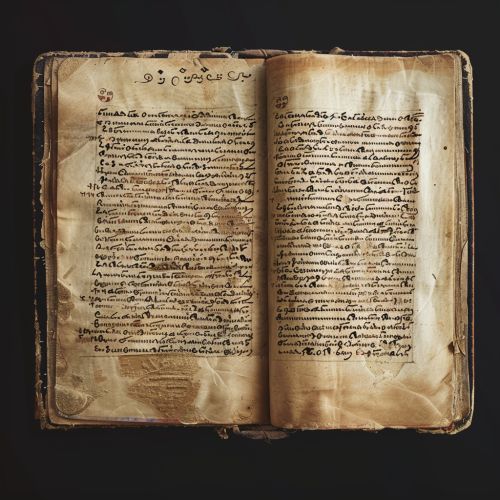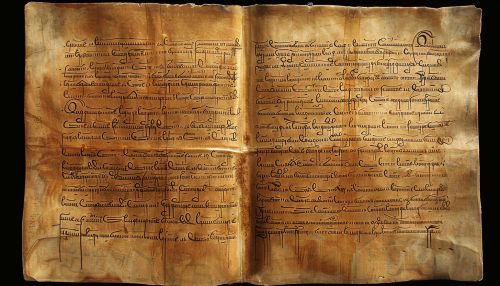Greek uncial script
Origins and Development
The Greek uncial script is a majuscule or large-letter form of writing that was used primarily from the 4th to 8th centuries AD. It evolved from the earlier Greek scripts, and was used in the writing of Greek and Latin manuscripts. The term "uncial" is derived from the Latin word "uncialis", meaning "inch-high", which refers to the height of the letters.


The Greek uncial script is characterized by its rounded, simple, and clear letter forms. It was written with a broad-nibbed pen, which was held at an angle to produce thick and thin strokes. The letters were usually written without any connecting strokes, which gives the script a distinct and individual character.
The Greek uncial script developed in a period of significant cultural and political change. The Roman Empire was in decline, and Christianity was emerging as a major religion. The script was used extensively in the production of Christian texts, including the Biblical manuscripts.
Characteristics
The Greek uncial script has several distinctive characteristics. The letters are generally rounded and have a uniform height. The script is written in a continuous line without word breaks, which is a feature it shares with the earlier Greek scripts.
The Greek uncial script is also characterized by its lack of ligatures. Ligatures are combinations of two or more letters that are written as a single unit. In the Greek uncial script, each letter is written separately, which gives the script a distinct and individual character.
The Greek uncial script is also notable for its use of diacritical marks. Diacritical marks are symbols that are added to letters to indicate a change in pronunciation. In the Greek uncial script, diacritical marks were used to indicate vowel length and accent.
Usage and Influence
The Greek uncial script was used extensively in the production of Christian texts. The script was used in the writing of the Greek Old Testament and the New Testament. The script was also used in the production of liturgical books and theological treatises.
The Greek uncial script had a significant influence on the development of later scripts. The script was used as a model for the development of the Latin uncial script, which was used in the writing of Latin manuscripts. The script also influenced the development of the Cyrillic script, which was used in the writing of Slavic languages.
The Greek uncial script also had a significant influence on the development of calligraphy. The script's rounded and simple letter forms were admired for their beauty and clarity, and were used as models for the development of calligraphic styles.
Decline and Legacy
The use of the Greek uncial script declined from the 9th century onwards. The script was gradually replaced by the minuscule, a smaller and more cursive form of writing. However, the script continued to be used in the production of liturgical books and theological treatises.
The Greek uncial script has left a significant legacy. The script's distinctive letter forms have been admired and studied by scholars and artists. The script has also been used in the production of facsimile editions of ancient manuscripts.
The Greek uncial script is also of significant historical and cultural value. The script provides a tangible link to the cultural and religious history of the Greek-speaking world. The script is also a testament to the skill and artistry of the scribes who created the manuscripts.
